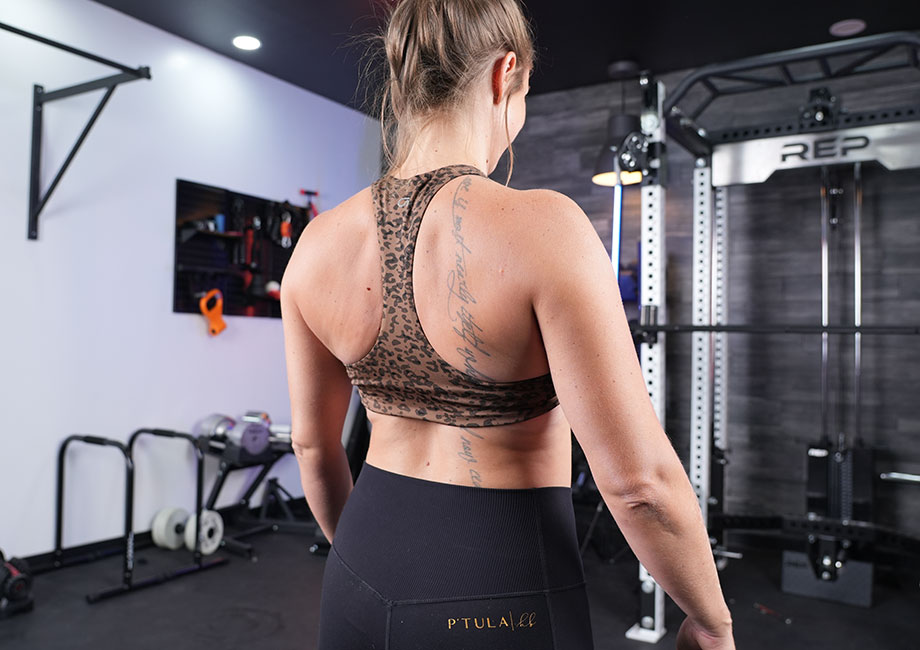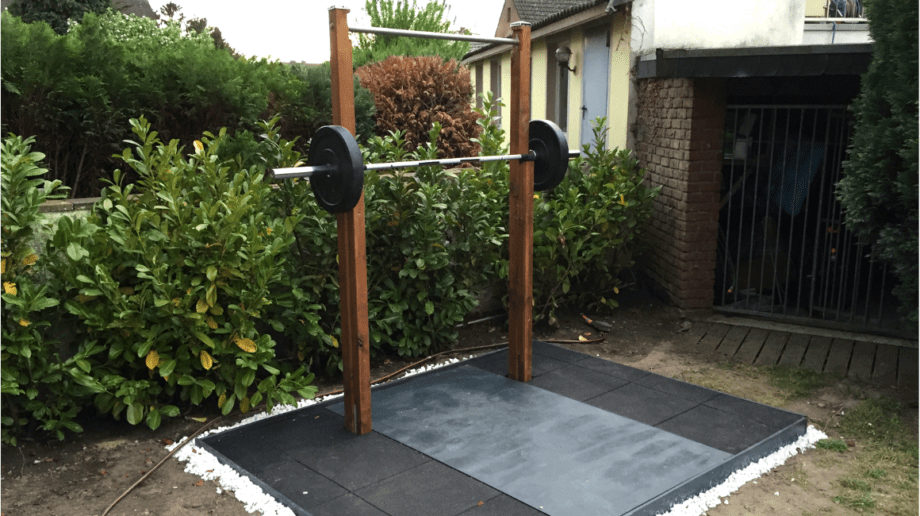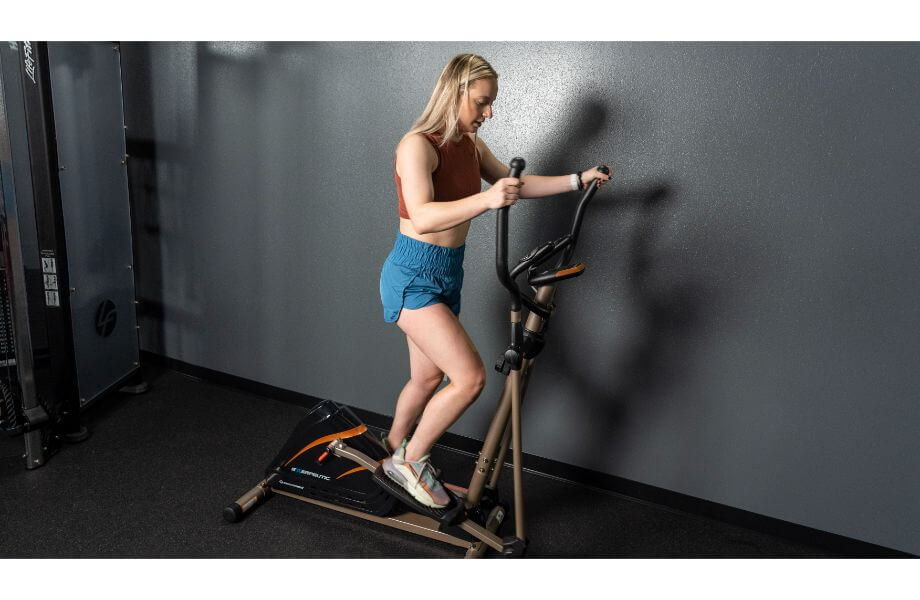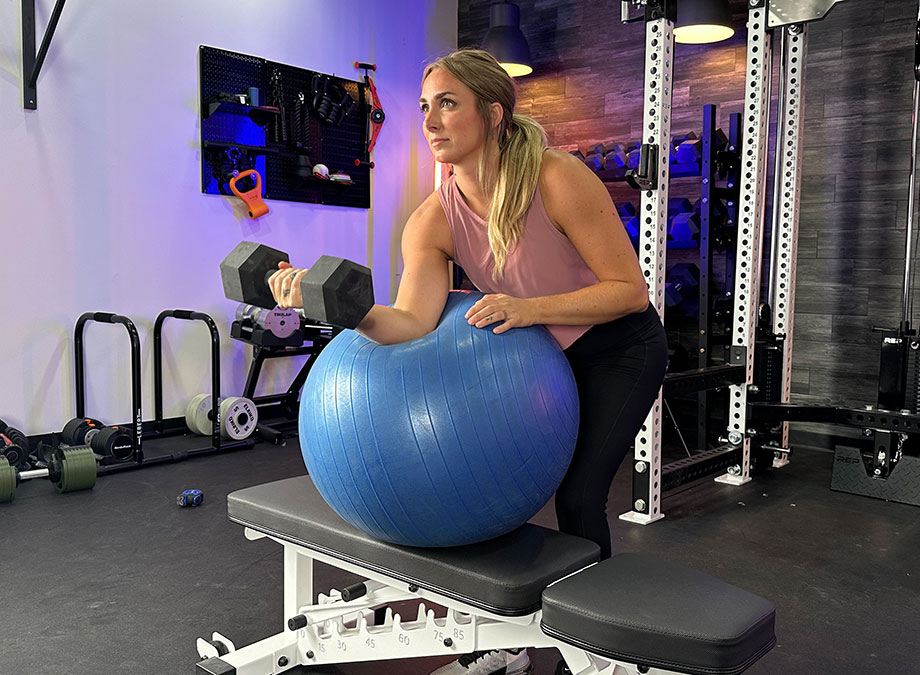Some exercises are overlooked because they look so easy, with the scapular retraction exercise being one of those. Let’s face it, all you do is squeeze your shoulder blades together and rinse and repeat. But just because it is simple doesn’t mean it is not beneficial.
RELATED: Add These 12 Rhomboid Exercises For Upper Back Strength And Size
The scapular retraction exercise trains the essential muscle groups between your scapula, the rhomboids, and the middle and lower trapezius. These muscles are responsible for good standing posture and shoulder mobility and are involved in almost every upper-body movement as well as activating all parts of your trap muscles1. Isolating these muscles with the scapular retraction movement is an uncomplicated way to strengthen them and create a better mind-muscle connection.
RELATED: Isolation Exercises
Let’s jump right into this exercise so you can learn all there is to know about the scapular retraction exercise, along with tips from me, a certified personal trainer (CPT), who can help you incorporate this movement into your regular fitness routine.
How To Do a Standing Scapular Retraction Exercise
- Stand upright comfortably with your arms by your side and feet hip-width apart.
- Start the movement with your shoulders down and chest up by retracting your shoulder blades.
- Keep squeezing your shoulder blades together until you can go no further without discomfort.
- Once together, pause and protract to the starting position.
- Reset and repeat for desired repetitions.
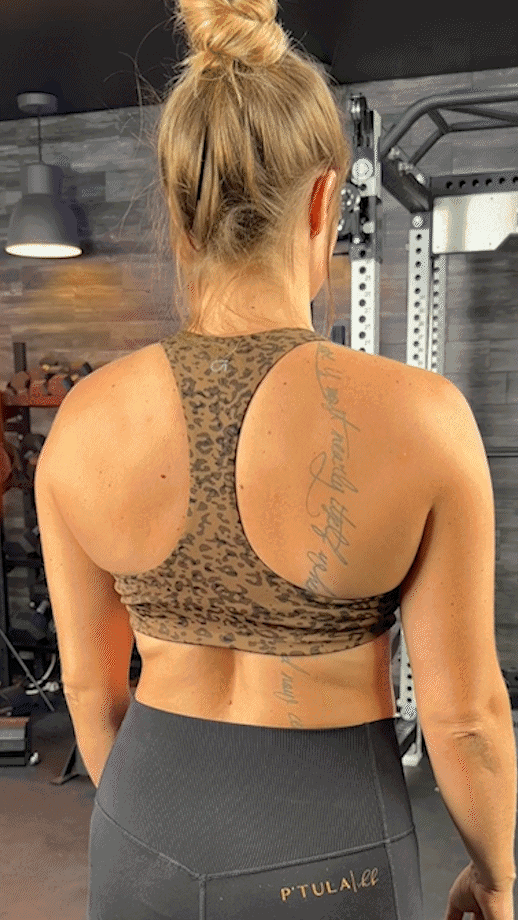
Trainer Tips for Form
Although the scapular retraction exercise is not complicated, it still helps you know the form tips to get the best out of this exercise.
Relax
With many strength exercises, you must create tension to achieve an optimal position, but not with the scapular retraction movement. Relaxing in a standing position with your arms hanging free by your sides works best.
Posture
The age-old personal trainer cue, “shoulders down and chest up,” puts your scapula in a better position to retract and protract.
Focus
To get the best out of this exercise, you’ll want to feel your muscles working. So focus on creating a good mind-muscle connection and initiate and squeeze the muscles between your shoulder blades for best results.
RELATED: Best Warm-Up Exercises
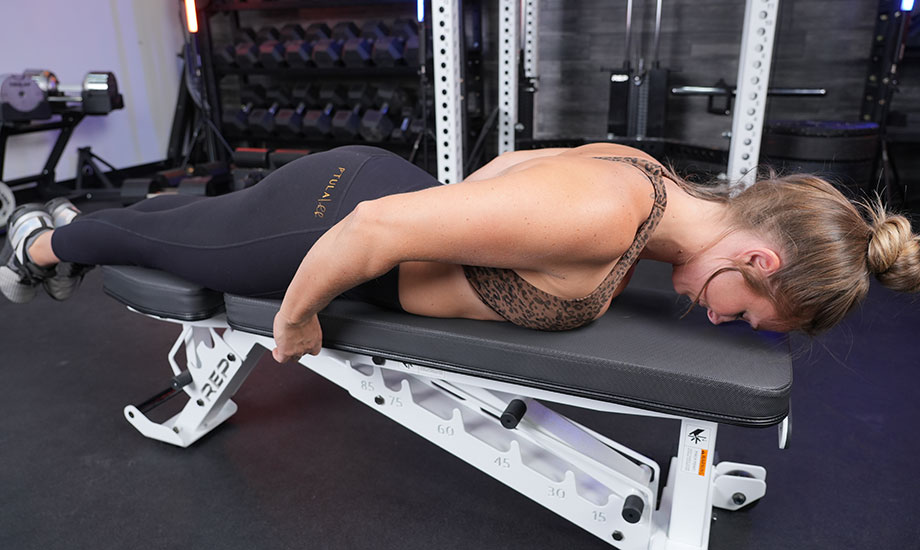
Common Scapular Retraction Exercise Mistakes
The scapular retraction exercise is not as challenging as the deadlift, squat, or bench press, but that doesn’t mean mistakes can’t be made. Here are a few things to watch out for when performing this exercise as part of your warm-up or workout.
Poor Starting Position
When I say shoulders down and chest up, I mean it. Starting this exercise with anything less than good posture means creating tension when your shoulder area needs to be relaxed. So, chest up and relax those arms, folks.
Slow Your Roll
Many exercises need momentum, with kettlebell swings being a prime example. But, with the scapular retraction exercise, performing it with control and without extra speed is critical.
Can You Feel It
The scapular retraction and protraction movement is subtle, and it’s easy not to feel the muscles working. That’s why focusing on the muscle between your shoulder blades is a great idea to really feel them working.
Benefits of Training The Scapular Retraction Exercise
The shoulder blades’ stability and movement are the drivers behind the wheel for all upper-body moves, and you directly or indirectly train them with most upper-body exercises. While often performed in a physical therapy setting, adding the scapular retraction to your exercise program is still a good idea.
RELATED: Upper Body Workout At Home
Improves Mobility and Muscle
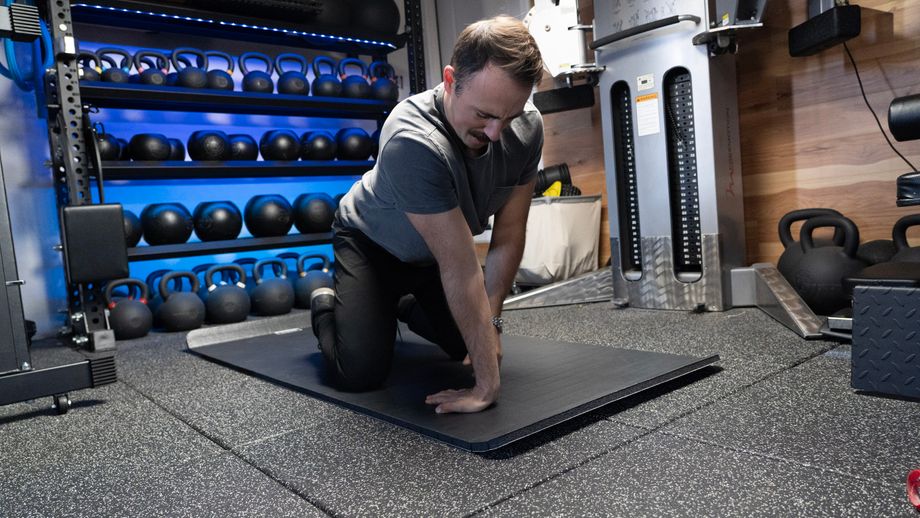
Improving your shoulder mobility and movement by training the scapular retraction exercise allows you to press, pull, and squat in a full range of motion, giving you a better chance of adding strength and muscle. Incorporating more mobility exercises, in general, is always a welcome addition to your training regimen.
May Help Reduce Injury Risk
An unrestricted joint, say the shoulder joint (clavicle and pectoralis), can go through its full ROM, preventing other joints from picking up the mobility shortfall. If the muscles between your scapula cannot move as they should, the joint above and below (lower back) will pick up the slack. Injuries may happen when joints do movements they’re not meant for or from overuse (e.g. shoulder impingement2) without taking precautions like form checks, warm-ups, cool-downs, and rest.
Scapular Retraction Exercise Variations
To strengthen your scapular stability, progressing is a must. Here are three progressions to fire up those muscles between your shoulder blades.
Prone Scapular Retraction
Why do it: The prone scapular retraction exercise has you lying face down on the floor, which means you’re lifting against gravity and adding extra resistance to strengthen your back muscles.
How to do it:
- Lie face down on the floor or exercise mat with your arms extended by your side,
- Slowly retract your shoulder blades until you can go no further.
- Return your arms to the floor and repeat for desired reps.
RELATED: Best Exercise Mats
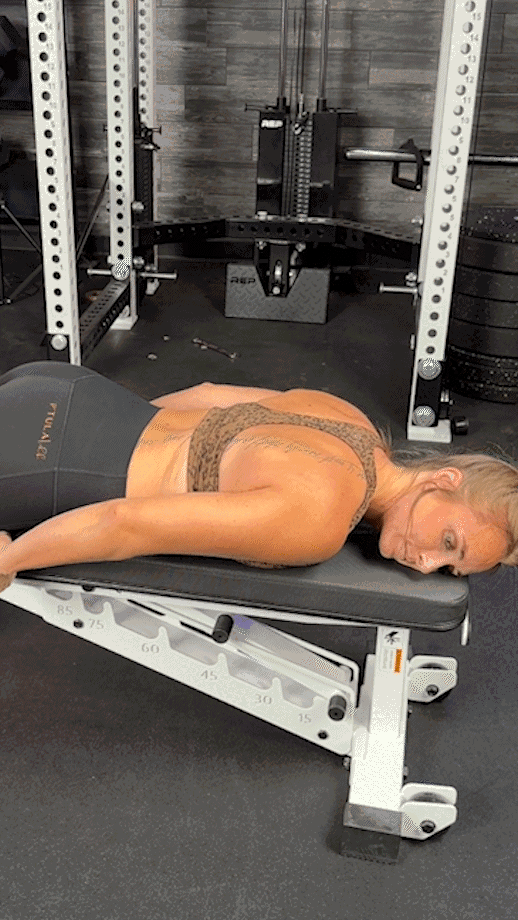
Hanging Scapular Retraction
Why do it: The hanging scapular retraction exercise further strengthens the rhomboids and trapezius because you’ll use your entire body weight to perform it.
How to do it:
- Hang from a chin-up or pull-up bar with an underhand shoulder-width grip
- From the dead hang position, pull your shoulder blades back and down to pull-up slightly
- Return slowly to the starting position and reset and repeat.
Note: If this move is too difficult at first, adding a heavy looped resistance band can help here.
RELATED: Best Resistance Bands
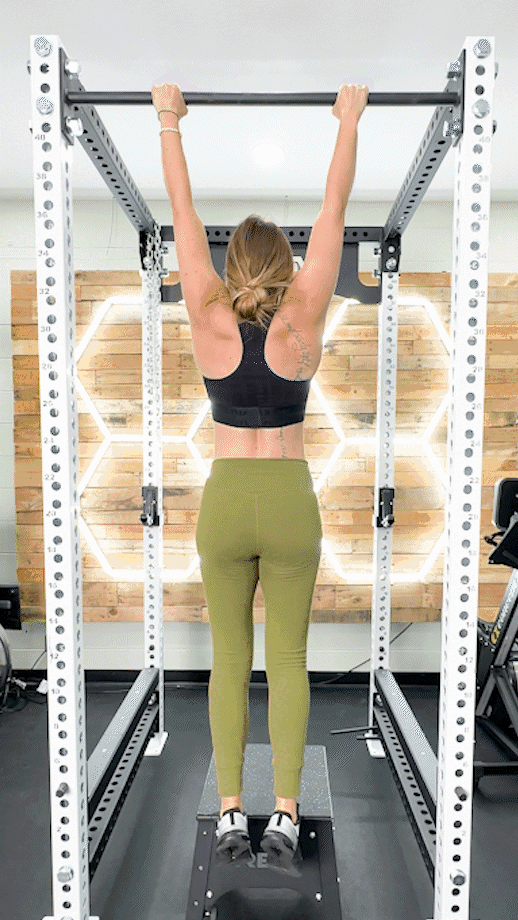
Scapular Push-ups
Why do it: With scapular push-ups, you’ll strengthen the muscles between your shoulder blades and improve your core and shoulder stability, including the rotator cuff.
How to do it:
- Assume the push-up plank position with your hands underneath your shoulders, glutes engaged, and spine neutral.
- Keeping your upper arms extended, retract your shoulder blades and lower your torso toward the ground.
- Push your hands through the floor and protract your scapula to return to the starting position.
- Reset and repeat for desired reps.
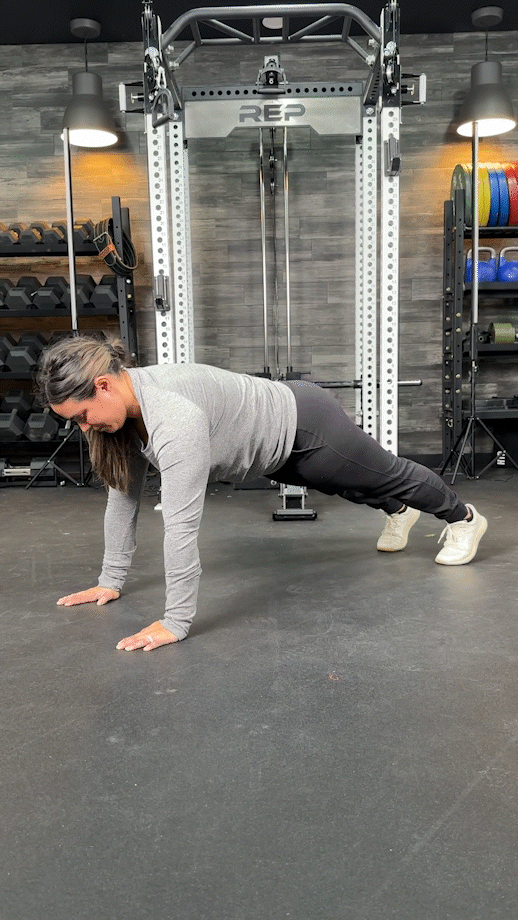
Scapular Retraction Exercise: FAQs
What are the benefits of scapular retraction exercises?
When you perform scapular retraction exercises, you can strengthen your upper-back muscles for improved mobility and movement. Improving your shoulder mobility may help reduce your risk for shoulder pain and injury and enable you to add more upper-body muscle.
What muscles does scapular retraction exercise work?
The muscles the scapular retraction exercise works are the two primary muscles between your shoulder blades responsible for the adduction of the scapula, the rhomboids and trapezius muscles.
Which exercise emphasizes shoulder retraction?
Although shoulder retraction occurs during pressing movements like the bench press and push-up, pulling moves can also strengthen the scapular retractors, like dumbbell and barbell rows, chin-ups, and pull-ups.
How do you strengthen your scapular protraction?
A simple method to strengthen your scapular protractor, the serratus anterior, is to reach at the end of any press or pull exercises. For instance, when you’re about to finish a push-up, push your hands through the floor to protract your shoulder blades.
References
1. Kara D, Harput G, Duzgun I. Shoulder-Abduction Angle and Trapezius Muscle Activity During Scapular-Retraction Exercise. J Athl Train. 2021 Dec 1;56(12):1327-1333. doi: 10.4085/1062-6050-0053.21. PMID: 34911072; PMCID: PMC8675318.
2. Ludewig PM, Braman JP. Shoulder impingement: biomechanical considerations in rehabilitation. Man Ther. 2011 Feb;16(1):33-9. doi: 10.1016/j.math.2010.08.004. PMID: 20888284; PMCID: PMC3010321.


